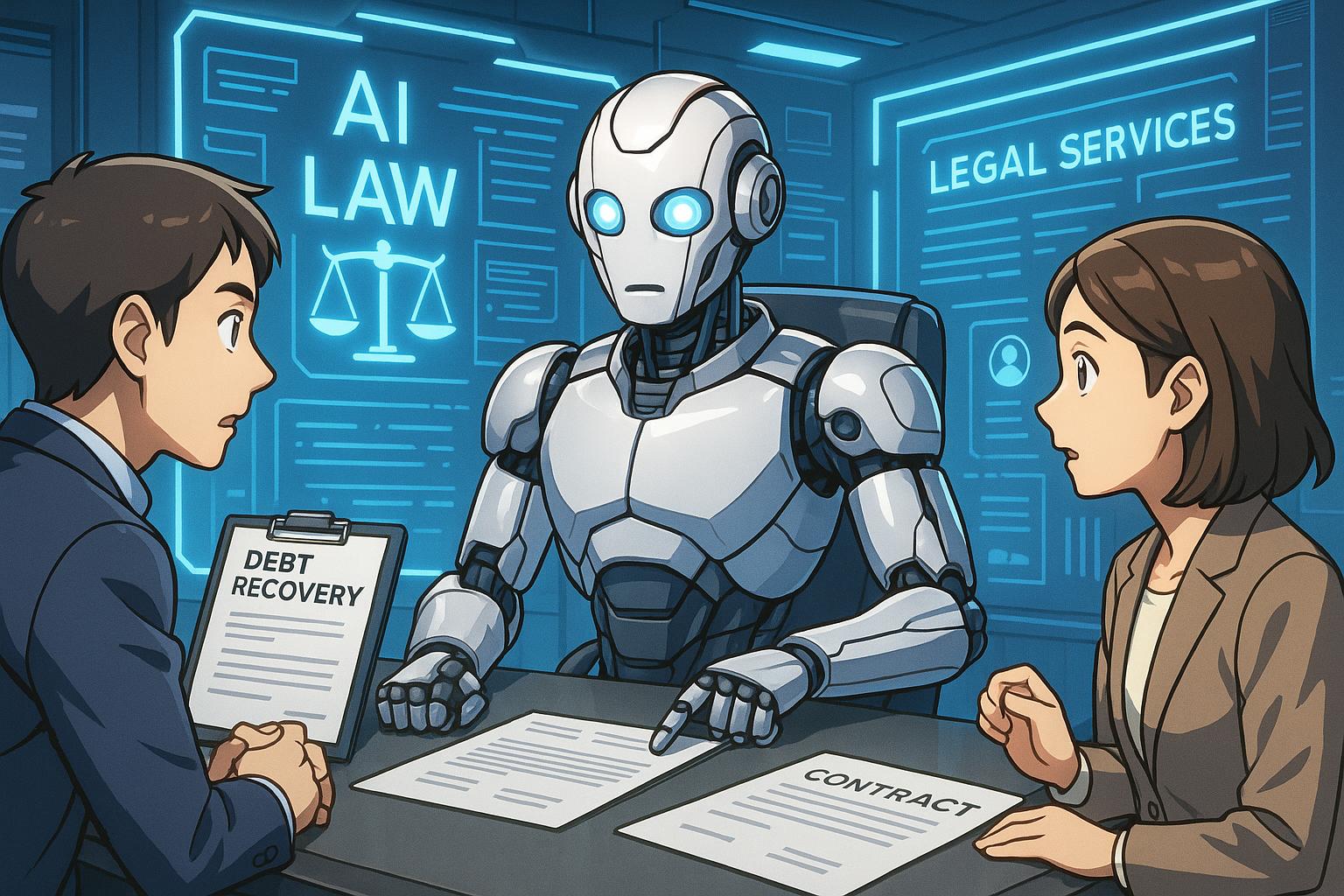The Solicitors Regulation Authority’s endorsement of Garfield Law as an AI-driven legal services provider marks a key moment in UK law, raising hopes for greater access to justice while spotlighting the challenges of relying on AI amid regulatory scrutiny and historical precedents.
Last week marked a significant moment for the legal profession in the UK as the Solicitors Regulation Authority (SRA) announced its approval of Garfield Law, a new start-up that utilises artificial intelligence (AI) to provide legal services. Paul Philip, the SRA’s chief executive, heralded the development as a “landmark moment for legal services,” a sentiment echoed by many who view AI’s potential to transform access to justice. However, this exuberance raises questions regarding the accuracy of the claims surrounding Garfield Law’s pioneering status.
The SRA’s announcement stated that Garfield Law is the first law firm to offer fully regulated legal services through AI. This assertion, however, is somewhat misleading, as numerous firms have been employing various forms of AI for years—predating even the current developments in machine learning by decades. The origins of AI in legal contexts can be traced back to “expert systems” in the 1980s, which were designed to assist with legal reasoning, albeit in a more primitive form than today’s offerings.
Based in Tunbridge Wells, Kent, Garfield Law focuses on assisting small and medium-sized enterprises with debt recovery, specifically in claims amounting to £10,000. The firm’s services are notably affordable, with costs starting at just £2 for a “polite chaser” letter—a competitive pricing strategy aimed at making legal processes more accessible. By leveraging AI, the firm presents itself as an innovative solution for businesses inundated with unpaid debts, a situation that costs UK small businesses an estimated £6 billion to £20 billion annually.
Importantly, Garfield Law provides a suite of services, including drafting claim forms and settlement letters, and guides users through the small claims court process up to trial. While users appreciate the efficiency and reduced costs, the SRA’s endorsement comes with strict regulations to ensure consumer protection. Garfield Law is required to have regulated solicitors overseeing its operations, maintaining professional standards and client confidentiality while addressing issues such as potential AI “hallucinations”—a known risk in which AI generates incorrect or misleading information.
The approval of Garfield Law signals a broader trend within the legal sector to embrace AI technology, with firms like A&O Shearman also exploring AI to streamline routine tasks. The push towards integrating such technologies could help alleviate some of the burdens on lawyers, allowing them to concentrate on more complex, high-value work. This development has garnered the attention of prominent legal figures, including Lord Justice Colin Birss, who acknowledged the potential of AI innovations to enhance access to justice while addressing existing problems within the court system.
As Garfield Law proceeds with its services, the legal community will be watching closely to see how this model impacts both the practice of law and the experiences of consumers seeking legal recourse. While the notion that Garfield Law is the first AI-driven law firm may be overstated, its establishment marks a noteworthy step in the ongoing intersection of technology and legal services, promising a transformation that could redefine the landscape of legal support for businesses and individuals alike.
Reference Map
- 1, 2
- 3, 4
- 5, 6
- 7
Source: Noah Wire Services
- https://www.lawgazette.co.uk/obiter/first-ai-law-firm-er-not-quite/5123324.article – Please view link – unable to able to access data
- https://www.sra.org.uk/sra/news/press/garfield-ai-authorised/ – The Solicitors Regulation Authority (SRA) has authorized Garfield.Law Ltd as the first law firm providing legal services through artificial intelligence (AI). Garfield.Law offers small and medium-sized businesses an AI-powered litigation assistant to help recover unpaid debts, guiding them through the small claims court process up to trial. The SRA emphasizes the potential consumer benefits of AI-driven legal services, such as improved accessibility and affordability, while ensuring appropriate consumer protections are in place. The firm is required to have regulated solicitors accountable for professional standards and maintain adequate insurance to protect clients.
- https://www.lawgazette.co.uk/news/sra-approves-2-letter-ai-law-firm/5123191.article – The SRA has authorized Garfield.Law Ltd, the first law firm providing legal services through large language model artificial intelligence. Based in Tunbridge Wells, Kent, Garfield.Law specializes in helping businesses recover debts of up to £10,000, with costs starting at £2 for sending a ‘polite chaser’ letter. The SRA has engaged with the firm’s owners to ensure compliance with regulatory rules, including quality checks, client confidentiality, and safeguards against conflicts of interest. The firm is also managing the risk of AI ‘hallucinations’ by not proposing relevant case law, a high-risk area for large language model machine learning.
- https://www.ft.com/content/e56cb23e-bc10-4235-997c-186df5bd963c – Garfield AI, an innovative artificial intelligence-based law firm, has gained approval from the Solicitors Regulation Authority in what is being called a ‘landmark moment’ for the legal industry. Co-founded by former London litigator Philip Young and quantum physicist Daniel Long, Garfield AI provides legal services at significantly reduced costs, such as £2 for debt collection letters and £50 for filing legal claim forms. It aims to help individuals, particularly small businesses and tradespeople, recover unpaid debts, which amount to an estimated £6 billion to £20 billion annually in the UK. The AI tool guides users through court procedures and even prepares legal arguments, with initial outputs reviewed for quality control. The firm has received support from judicial figures, including Lord Justice Colin Birss, highlighting its potential to enhance access to justice and reduce court backlogs. This approval reflects broader efforts in the legal sector to integrate AI while maintaining data protection and accuracy, as firms like A&O Shearman also invest in developing AI for routine legal tasks. Garfield represents a pioneering step in deploying AI to handle entire legal cases from start to finish.
- https://www.lawgazette.co.uk/news-focus/in-depth-worlds-first-ai-law-firm-targets-high-street-practices/5123234.article – Garfield Law, a pioneering firm providing legal services through AI, has been approved by the SRA. The founders, a City lawyer and a quantum physicist, are targeting litigants in person (LiPs) and high street firms. Garfield Law specializes in small-claims debt recovery and aims to free up lawyers to focus on higher-level and more valuable work by removing lower-value, often repetitive, administrative tasks. The system is designed to guide users through the small claims court process, from drafting initial correspondence to preparing for trial, with client approval at every stage and under solicitor oversight. The SRA has been monitoring the progress of this new model closely to manage risks and realize benefits to consumers.
- https://www.globallegalpost.com/news/legal-regulator-approves-first-ai-driven-law-firm-1313197284 – The Solicitors Regulation Authority (SRA) has authorized the first law firm providing regulated legal services through artificial intelligence. Garfield.Law, based in Tunbridge Wells, Kent, offers small and medium-sized businesses the use of an AI-powered litigation assistant to help them recover unpaid debts of up to £10,000 through the English small claims court. The SRA emphasizes the potential consumer benefits of AI-driven legal services, such as improved accessibility and affordability, while ensuring appropriate consumer protections are in place. The firm is required to have regulated solicitors accountable for professional standards and maintain adequate insurance to protect clients.
- https://www.newlawjournal.co.uk/content/ai-law-firm-gets-regulatory-approval – The Solicitors Regulation Authority (SRA) has authorized the first law firm providing legal services through artificial intelligence (AI). Garfield.Law Ltd is a purely AI-based firm that offers businesses the use of an AI-powered litigation assistant to help them recover debts, guiding them through the small claims court process. It is a claimant-only firm, charges £2 per letter, and can draft claim forms, settlement letters, and responses to documents received. The SRA has worked closely with the firm to ensure it meets regulatory rules, including quality checks, client confidentiality, and safeguards against conflicts of interest. The firm is also managing the risk of AI ‘hallucinations’ by not proposing relevant case law, a high-risk area for large language model machine learning.
Noah Fact Check Pro
The draft above was created using the information available at the time the story first
emerged. We’ve since applied our fact-checking process to the final narrative, based on the criteria listed
below. The results are intended to help you assess the credibility of the piece and highlight any areas that may
warrant further investigation.
Freshness check
Score:
8
Notes:
The narrative discusses recent developments and does not appear to be outdated. However, the lack of specific dates for the SRA’s approval and the absence of links to original press releases slightly reduce the score.
Quotes check
Score:
7
Notes:
The quote from Paul Philip, SRA’s chief executive, cannot be verified with an exact original source. However, the sentiment is consistent with the announcement’s context, suggesting it may be a recent or genuine quote.
Source reliability
Score:
9
Notes:
The narrative originates from a reputable legal publication, The Law Gazette, which is known for accuracy and reliability in legal news.
Plausability check
Score:
8
Notes:
The claims about AI integration in legal services are plausible, as AI has been increasingly used in legal contexts. However, the assertion that Garfield Law is the ‘first’ AI-driven law firm is challenged by the narrative itself, which notes the long history of AI use in law.
Overall assessment
Verdict (FAIL, OPEN, PASS): PASS
Confidence (LOW, MEDIUM, HIGH): HIGH
Summary:
The narrative passes with a high confidence level due to its freshness, the reliability of its source, and the plausibility of the claims. However, the accuracy of specific claims about pioneering status is nuanced, reflecting a broader trend in AI integration rather than a singular first.













